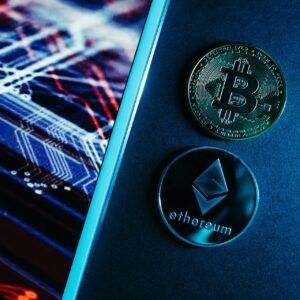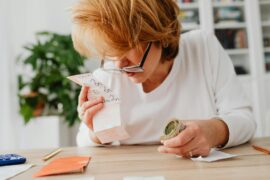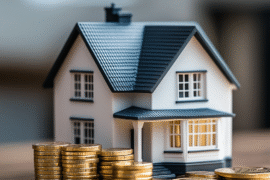This article may contain references to products or services from one or more of our advertisers or partners. We may receive compensation when you click on links to those products or services. Nonetheless, our opinions are our own.

Updated by Albert Fang
Have you ever dreamt of renovating your home into a stunning, comfortable oasis that also boosts the property’s value? It’s a common aspiration for homeowners across the nation. Home renovations are captivating and hold significant financial potential.
According to the National Association of Realtors, there’s a remarkable insight that every homeowner should take into account. On average, you can anticipate an ROI of 56% when investing in a home remodeling project.
Now, that’s an excellent starting point for exploring home renovations. It’s not just about creating a beautiful living space; it’s also about making a sound financial decision. In this post, we’ll discuss the different types of home renovation, unraveling the factors that can make or break your remodeling dreams.
- Factors to Consider
- Renovation Types and ROI
- DIY vs. Professional Renovations
- Funding Your Renovations
- Related Questions
- Conclusion
- Recommended Reads
Factors to Consider
In home renovations, three pivotal factors emerge as guiding lights: the cost-benefit analysis, the ever-shifting current market trends, and a close examination of your neighborhood’s dynamics. These considerations form the bedrock of strategic decisions that can significantly impact your property’s value.
Cost-Benefit Analysis
Cost-Benefit Analysis stands as a valuable approach for home renovations. It involves calculating upfront costs, estimating potential returns, and assessing the all-important Return on Investment (ROI). These steps help you make informed decisions, ensuring your investment is both sound and rewarding.
Calculating Upfront Costs
Before undertaking any big investment projects, such as a home renovation, it’s crucial to understand what constitutes the upfront costs. These are the expenses you’ll incur at the outset, covering materials, labor, permits, and any unforeseen expenses that may arise during the project.
To calculate these costs, start by obtaining detailed quotes from contractors and suppliers. Be sure to account for any hidden costs or unexpected contingencies. It’s also wise to set aside a contingency fund of around 10% to 20% of the total project cost to avoid financial mistakes. This buffer can be a lifesaver when unexpected surprises crop up.
There are costs associated with permits, which are permissions from local authorities to carry out the renovation and any expenses related to design or architectural services if you plan to use them. By calculating these upfront costs, you’ll be better prepared for the financial aspects of your home renovation project, helping you steer clear of financial mistakes along the way.
Estimating Potential Returns
When it comes to the cost-benefit analysis of your home renovation project, estimating potential returns is the part that piques everyone’s interest. It’s about envisioning how your investment today can translate into increased property value tomorrow.
To do this, Realtor Darren Robertson says, “Consider factors like the current market conditions and trends. Explore what kinds of renovations are in demand in your area—are people looking for modern kitchens, spacious bathrooms, or energy-efficient upgrades? Additionally, consult with real estate professionals or appraisers who can provide insights into the potential return on investment for specific improvements.”
In addition, you could consider using some architectural rendering services that will allow you to visualize your changes before you commit to the full cost of the refurbishment.
By estimating potential returns, you’ll get a clearer picture of how your renovation dollars can work for you in the long run, ensuring your project is not just a home improvement but a smart investment decision.
ROI Assessment
Now, let’s talk about something every homeowner planning a renovation should focus on ROI (Return on Investment). It’s the ultimate measure of whether your project was a financial win.
To assess ROI, compare the total cost of your renovation with the expected increase in your home’s value. Keep in mind that some projects yield higher returns than others. Factors like the neighborhood, the quality of materials and workmanship, and the current real estate market can all influence your ROI.
Aim for renovations that enhance your living space and offer a solid return when it’s time to sell. A well-informed ROI assessment ensures your home improvement isn’t just about comfort; it’s also a savvy financial move.
Current Market Trends
Understanding Current Market Trends is essential as it allows you to assess the impact of market conditions, identify renovation trends, and align your project with buyer preferences. Staying attuned to these trends can make your renovation a wise investment in today’s real estate landscape.
Impact of Market Conditions
Market conditions have a substantial influence on your home renovation’s outcomes. In a buyer’s market, where supply exceeds demand, prices are often competitive, making cost-effective renovations that cater to buyer preferences particularly attractive. Conversely, in a seller’s market characterized by high demand, you might consider more upscale renovations to maximize your return.
Being aware of these conditions lets you strategize your renovation for optimal value in the ever-evolving real estate landscape. Understanding market conditions is akin to reading the real estate market’s pulse. It informs your renovation choices and lets you decide on timing and budget.
Identifying Renovation Trends
Recognizing renovation trends is like peering into the future of home improvement. By paying attention to what’s popular, you can tailor your home renovation to match buyer expectations. Start by exploring design publications, real estate listings, and social media to unearth what renovation ideas are in trend right now.
Trends like open-concept kitchens, eco-friendly upgrades, and smart home features can make your investment stand out and attract more potential buyers. So, remember, trend-spotting is more than a trend itself—it’s a strategic tool for renovation success.
Aligning with Buyer Preferences
Renovation that aligns with buyer preferences is a smart move in today’s real estate game. It’s about giving potential buyers what they’re looking for, which can significantly boost your chances of a successful sale.
To do this, take a look at what’s popular among homebuyers in your area. Are they leaning towards modern aesthetics, energy-efficient upgrades, or spacious layouts? Research local real estate listings and talk to agents to understand buyer preferences.
By tailoring your renovation to match these preferences, you increase the likelihood of attracting interested buyers and securing a better return on your investment. It’s all about creating a home that speaks to your potential buyers’ hearts and desires.
Neighborhood Assessment
In home renovations, your neighborhood becomes more than just an address; it’s a critical factor in your project’s success. This assessment involves deciphering the nuances of the local real estate scene, harmonizing your renovations with the neighborhood’s character, and steering clear of overdoing it.
Local Real Estate Market
In renovating a home, your neighborhood’s real estate market serves as a guiding light. It’s like having a roadmap to understand what’s driving property values in your area. To get started, look at recent home sales within your community. This will give you a clear picture of the price trends and show if homes with specific features or upgrades sell at a premium.
Additionally, local real estate agents can provide valuable insights into what buyers are looking for and how the market behaves. With this knowledge, you can navigate your renovation with a clear sense of aligning it with what the local market wants. Ultimately, it’s about ensuring your investment improves your home and holds its value when it’s time to sell.
Matching Renovations to the Area
Ensuring your renovations align with your neighborhood is a recipe for success. Think of it as creating a puzzle piece that seamlessly fits into the bigger picture. Start by observing what types of homes thrive in your area. Is it cozy bungalows, modern townhouses, or spacious suburban dwellings? By mimicking the styles and features common in your neighborhood, you not only make your home look better from the outside but also make it more appealing to people who might want to buy it.
Moreover, consider local tastes and needs. If your area values energy efficiency, focus on eco-friendly upgrades. If schools are a priority, enhance family-friendly spaces. Matching your renovations to the area isn’t just about blending in; it’s about crafting a home that resonates with your community, making it all the more attractive to future buyers.
Avoiding Over-Improvement
It’s vital to strike a balance, ensuring you don’t overdo it. Over-improvement happens when you invest more in your home than what the local market can support. To avoid this, keep an eye on what similar homes in your neighborhood are worth and how much they’ve sold for. Don’t make your home significantly more expensive than others around you.
Another way to steer clear of over-improvement is to focus on renovations that enhance your daily living experience without making your home an outlier in the neighborhood. Smart, well-thought-out upgrades can add value without risking your investment.
Renovation Types and ROI
There are different renovation types, each with its own potential return on investment (ROI). We’ll explore four key categories: Kitchen Renovations, Bathroom Upgrades, Curb Appeal Projects, and Energy Efficiency Improvements. These insights will help you decide where to invest for the best returns.
Kitchen Renovations
In home improvements, kitchen renovations hold a special place. They go beyond aesthetics, enhancing functionality, attracting potential buyers, and boasting remarkable return on investment potential. Let’s dive into the heart of the home and uncover the possibilities within.
Enhancing Functionality
Kitchen renovations aren’t just about looks; they’re about making your daily life smoother. You can improve functionality by reorganizing cabinets, creating efficient work zones, and upgrading appliances. This means a more comfortable cooking experience and better use of your space.
At the time of selling it, potential buyers will appreciate a kitchen that’s both beautiful and practical. So, think about your needs and how a renovated kitchen can make your life easier while adding lasting value to your home.
Attracting Potential Buyers
A thoughtfully executed kitchen renovation has the power to captivate potential buyers. Beyond its culinary function, it becomes an inviting and functional hub of the home. Modern amenities, stylish design, and a well-conceived layout can capture the imagination of those looking for their dream kitchen. A renovated kitchen tells a story of care and attention to detail, making your home more appealing to a broader audience.
When buyers walk into a beautifully renovated kitchen, they can picture themselves cooking, gathering, and making memories there. It’s an investment that not only enhances your daily life but also increases the marketability of your home when it’s time to sell.
Return on Investment Potential
Kitchen renovations offer more than just a fresh look; they can yield a strong return on investment (ROI). When you invest wisely in your kitchen, you’re enhancing your daily life and also boosting your home’s resale value. Modern appliances, updated fixtures, and a well-designed space can all translate into a higher selling price when it’s time to move on.
Buyers often prioritize kitchens, and a renovated one can make your property stand out in a competitive market. So, while you’re creating a space that suits your needs, you’re also making a smart financial move. It’s a win-win scenario where your investment in comfort and style can pay off handsomely down the road.
Bathroom Upgrades
Let’s step into the bathroom upgrades, where small changes can make a big difference. Some key aspects that need to be focused on are fixtures, Increasing property value, and ROI considerations. These insights will help you transform your bathroom into a more functional and valuable space.
Modernizing Fixtures
Modernizing bathroom fixtures can breathe new life into your space without breaking the bank. You can replace old faucets, showerheads, and lights with modern ones, quickly giving your bathroom a fresh and updated appearance. These changes don’t just improve aesthetics; they also enhance functionality, providing better water efficiency and ease of use.
Moreover, modern fixtures can elevate your daily routine, making your bathroom a more enjoyable and efficient space. Plus, when it comes to selling your home, updated fixtures can be a compelling selling point, attracting buyers who appreciate the convenience and style of a well-maintained bathroom.
Increasing Property Value
A modern and well-maintained bathroom is a significant selling point for potential buyers. It shows that your home has been cared for and updated, making it more appealing in a competitive real estate market.
Investing in your bathroom can pay off handsomely when it’s time to sell your home. Even small changes, like fresh paint, updated fixtures, upgraded door, or retiling, can make a big difference. Buyers are often willing to pay a premium for a move-in-ready home; an upgraded bathroom is vital to that appeal. So, as you consider your renovation options, remember that your investment isn’t just in your daily comfort but also in your property’s future value.
ROI Considerations
Start by setting a budget that aligns with your home’s overall value and the local market. Focus on improvements that offer a balance of increased comfort and potential resale value.
Remember that over-the-top luxury upgrades might not translate into higher home value. Sometimes, even minor changes can significantly enhance your bathroom’s appeal. It’s all about finding the right balance between your personal preferences and smart financial decisions to maximize your bathroom upgrade’s ROI.
Curb Appeal Projects
Curb appeal elevates the visual charm of your home. It involves enhancing your residence’s exterior in various ways to make it more attractive and inviting.
Boosting First Impressions
Enhancing your home’s curb appeal is all about making a memorable first impression. Simple upgrades like a fresh coat of paint, a well-maintained front door, or a tidy entrance area can work wonders. These small changes create an attractive atmosphere that welcomes you home every day and makes potential buyers instantly drawn in.
Moreover, boosting first impressions isn’t just about aesthetics; it can also increase your property’s perceived value. When people see a well-kept exterior, they often associate it with a home that’s been cared for inside and out.
Landscaping and Exteriors
Landscaping and exterior improvements can work wonders in curb appeal projects. A well-maintained garden, trimmed hedges, and colorful flowers can instantly breathe life into your property. Repairing any wear and tear on your home’s exterior can give it a renewal.
These enhancements make your home more visually appealing and contribute to a positive neighborhood atmosphere. A beautifully landscaped yard and a well-kept exterior can be a source of pride for you as a homeowner and leave a lasting impression on anyone passing by.
Impact on Resale Value
Curb appeal projects have a significant impact on the resale value of your home. When your property looks well-maintained and visually appealing from the outside, it can attract potential buyers and leave a lasting positive impression. These projects enhance the aesthetic appeal and perceived value of your home.
Adding features like a garden or workshop shed can further boost your home’s value. These versatile structures provide functional storage or creative space, appealing to buyers looking for practicality and charm. A thoughtfully designed shed that complements your home’s style can enhance both utility and visual appeal.
Investing in curb appeal can be a wise decision, as it often leads to a higher selling price and a quicker sale when you decide to put your home on the market.
Energy Efficiency Improvements
Improving your home’s energy efficiency comes with various advantages, both immediate and long-lasting. It’s not just about reducing your monthly bills; it’s about positively impacting the environment. Let’s explore why investing in energy efficiency is a wise choice for your household and the planet.
Lowering Utility Costs
Energy efficiency upgrades offer a compelling benefit: they help you lower your utility costs. Imagine enjoying the same comfort level in your home while paying less each month. It’s possible by investing in energy-efficient solutions. You can start by replacing outdated appliances with energy-efficient ones or sealing those pesky drafts that sneak into your home. These simple steps have a significant impact on your monthly bills. It’s a win-win situation for your wallet and the environment.
Environmentally Friendly Upgrades
Environmentally friendly upgrades are designed to use resources efficiently and sustainably, making them a powerful tool for reducing your impact on our planet. Install solar panels to harness clean, renewable energy from the sun or make the switch to energy-efficient lighting and appliances. These choices go a long way in curbing your carbon footprint.
More than just being kind to the environment, these upgrades are a declaration of your commitment to responsible living. They set an example that can inspire positive change in your community, fostering a shared commitment to sustainability.
ROI through Energy Savings
Energy efficiency investments aren’t merely about cutting costs; they’re also savvy financial decisions that can generate substantial returns on investment (ROI). By steadily decreasing your energy consumption and reducing those monthly utility bills, you’re building a pool of savings. It’s like planting seeds of financial growth that continue to flourish over time, all thanks to your wise choice to prioritize energy efficiency.
Additionally, the ROI extends beyond your immediate financial gains. By making your home more energy-efficient, you contribute to a sustainable future and help combat environmental challenges.
DIY vs. Professional Renovations
You can have two choices while renovating your home. You can either do-it-yourself (DIY) or hire professional services. Each approach has its merits, and understanding them will help you make an informed decision for your home improvement projects.
DIY Pros and Cons
DIY home renovation has both advantages and drawbacks to consider. It includes potential cost savings, required skills and time, and the quality concerns of tackling home improvement projects independently. Understanding these factors will help determine if the DIY route is right for you.
Cost Savings Potential
One of the appealing aspects of DIY renovations is the potential for cost savings. By taking matters into your own hands, you can avoid labor costs associated with hiring professionals. Additionally, you can shop for materials and fixtures within your budget.
However, weighing these potential savings against your skill level and the project’s complexity is essential. While you may save on labor costs, mistakes can lead to additional expenses for repairs or replacements. Therefore, a realistic assessment of your abilities and the project’s demands is crucial when considering DIY renovations.
Skill and Time Requirements
DIY renovations come with their own set of skill and time demands. It’s essential to evaluate whether you have the necessary expertise and availability to tackle a particular project. Some tasks, such as painting a room or assembling furniture, may be relatively straightforward. Still, others, like plumbing or electrical work, require specialized skills.
Moreover, consider the time commitment involved. DIY projects can be time-consuming, and you’ll need to juggle your renovation tasks with your daily responsibilities. Ensuring you have the required skills and time is vital for a successful and stress-free DIY renovation experience.
Quality Concerns
While do-it-yourself (DIY) projects have the potential to save you money, it’s essential to acknowledge that they might consistently deliver a different level of craftsmanship and durability than professional work. The absence of expertise and experience that skilled tradespeople bring to the table can introduce a higher risk of errors or, worse, safety concerns.
Quality concerns also seep into the realm of materials and tools. DIY enthusiasts might be tempted by more budget-friendly options, but these choices may not always deliver the same performance as their higher-quality counterparts.
Professional Services
Professionals bring expertise and craftsmanship to your home renovations, ensuring top-notch results. Beyond their skills, they offer project management skills, keeping your project organized and on track.
Expertise and Craftsmanship
Choosing professional services for your home renovations offers an undeniable advantage: the expertise and craftsmanship they bring to the project. These seasoned professionals have invested years in perfecting their skills and refining their craft, transforming themselves into true masters of their trade. Their attention to detail is unmatched, guaranteeing a level of quality that’s often challenging to achieve with DIY efforts.
Their craftsmanship goes beyond technical skills; it extends to an innate sense of design and aesthetics. This means that not only will your project be executed with precision, but it will also be visually stunning.
Project Management Advantages
When you opt for professional services for your home renovations, you’re not just gaining skilled craftsmen; you’re also benefiting from their project management expertise. These professionals have a wealth of experience in coordinating complex projects, ensuring that every aspect of your renovation runs smoothly.
Their project management skills include efficient scheduling, procurement of materials, and coordination of various tradespeople. This level of organization helps prevent delays and keeps your project on track.
Budget and Timeline Considerations
Professionals also bring the invaluable advantage of budget and timeline considerations. These experts are well-versed in managing resources efficiently, ensuring that your project aligns with your financial plan. They provide transparency in cost estimates, helping you avoid unexpected expenses and stay within your budget.
Moreover, professionals understand the importance of adhering to timelines. They plan the project, accounting for every detail to prevent unnecessary delays. By choosing professional services, you’re securing a renovation experience that is not only well-executed but also fiscally responsible and punctual.
Funding Your Renovations
Home improvement journeys demand careful financial planning to transform your vision into reality. It’s essential to explore a range of financing options to identify the one that aligns best with your renovation project’s needs and your financial situation.
Financing Options
There are a variety of options for financing your renovation project, each option offers its own set of advantages and considerations. Let’s delve into these financing avenues to help you decide on your renovation venture.
Home Equity Loans
A home equity loan is a valuable option to explore. This financial avenue leverages the equity you’ve built in your home over the years. This option taps into the wealth you’ve built in your home over the years. It lets you borrow against the portion of your home you’ve paid off, which is the difference between its current market value and your remaining mortgage balance.
A significant advantage of the home equity loan is its typically lower interest rates than other loan types, making it an attractive choice for financing your home improvements.
Personal Savings
Using your personal savings to finance your home renovation is a straightforward and cost-effective approach. This method involves utilizing the money you’ve diligently set aside over time, whether it’s snugly tucked in a savings account or easily accessible through another financial avenue, to cover your renovation expenses.
One of the foremost advantages of this approach is its cost-effectiveness. You won’t be burdened with interest charges or the fees that come with loans, making it a financially astute decision.
Grants and Incentives
Exploring grants and incentives can be rewarding to finance your home renovation. Different government programs and non-profit organizations extend a helping hand to homeowners for renovation projects that are geared towards energy efficiency or environmental sustainability.
One significant advantage of these grants is their potential to substantially slash the overall cost of your renovation endeavor.
Q: Is home renovation an investment or an expenditure?
Home renovation can be a multifaceted financial decision. It significantly depends on the nature of the renovation project and the expected returns it may yield.
Q: Which home renovation projects typically offer the highest return on investment (ROI)?
Renovations that yield the most value include kitchen remodels, bathroom upgrades, and enhancing curb appeal through landscaping and exterior improvements.
Q: How can one determine the ROI of a home renovation project?
To calculate the ROI, subtract the renovation costs from the expected increase in home value. Divide this figure by the total renovation cost, then multiply by 100 to get the ROI percentage.
Q: Are there any market trends to consider when planning home renovations?
Yes, staying updated on current market trends helps homeowners make informed decisions, aligning their projects with buyer preferences and potentially increasing their property’s value.
Q: What role does energy efficiency play in the ROI of home renovations?
Energy-efficient upgrades reduce utility costs and appeal to eco-conscious buyers, potentially improving the ROI by making the property more attractive in today’s market.
Conclusion
Renovating a home is a significant decision that demands careful planning and consideration. You can ensure that your home renovations become a valuable investment by analyzing your specific circumstances, market trends, and ROI potential.
Whether you choose to go the DIY route or enlist professional services, aligning your project with buyer preferences and making energy-efficient upgrades can significantly boost your property’s value. So, take the time to assess, plan, and fund your renovations wisely to enjoy a more comfortable and valuable living space. Considering these factors helps you transform your house into the home of your dreams while making a wise and valuable investment in your future.

Reviewed and edited by Albert Fang.
See a typo or want to suggest an edit/revision to the content? Use the contact us form to provide feedback.
At FangWallet, we value editorial integrity and open collaboration in curating quality content for readers to enjoy. Much appreciated for the assist.
Did you like our article and find it insightful? We encourage sharing the article link with family and friends to benefit as well - better yet, sharing on social media. Thank you for the support! 🍉
Article Title: Are Your Home Renovations a Sound Investment?
https://fangwallet.com/2023/10/23/are-your-home-renovations-a-sound-investment/The FangWallet Promise
FangWallet is an editorially independent resource - founded on breaking down challenging financial concepts for anyone to understand since 2014. While we adhere to editorial integrity, note that this post may contain references to products from our partners.
The FangWallet promise is always to have your best interest in mind and be transparent and honest about the financial picture.
Become an Insider

Subscribe to get a free daily budget planner printable to help get your money on track!
Make passive money the right way. No spam.
Editorial Disclaimer: The editorial content on this page is not provided by any of the companies mentioned. The opinions expressed here are the author's alone.
The content of this website is for informational purposes only and does not represent investment advice, or an offer or solicitation to buy or sell any security, investment, or product. Investors are encouraged to do their own due diligence, and, if necessary, consult professional advising before making any investment decisions. Investing involves a high degree of risk, and financial losses may occur including the potential loss of principal.
Source Citation References:
+ Inspo












































